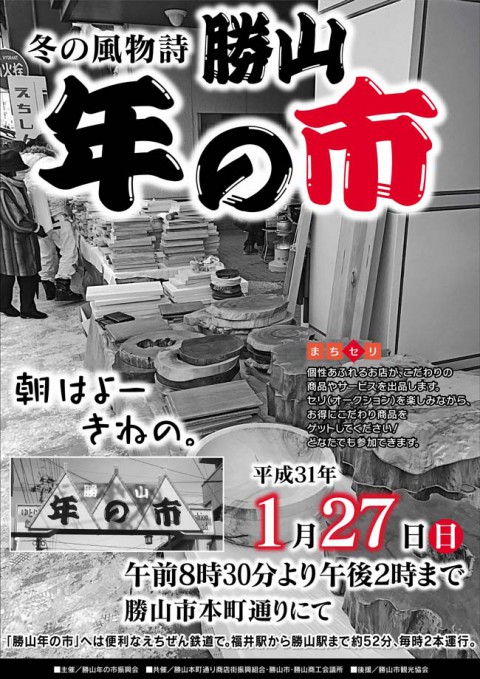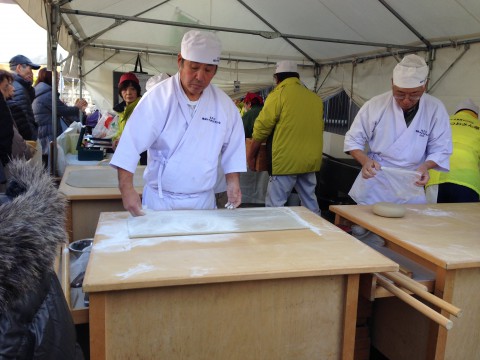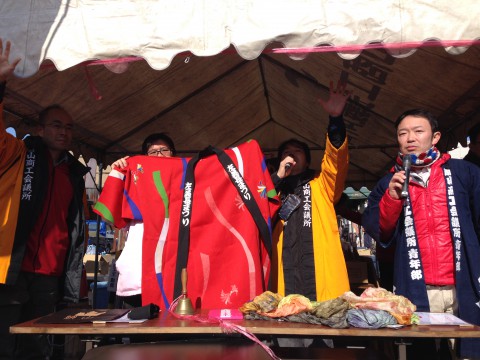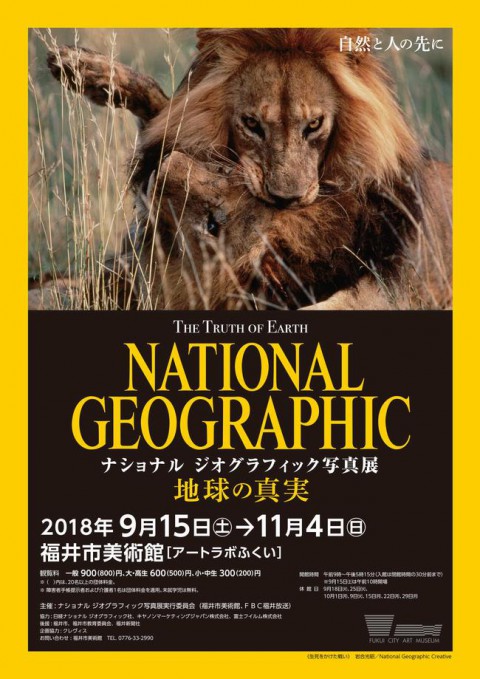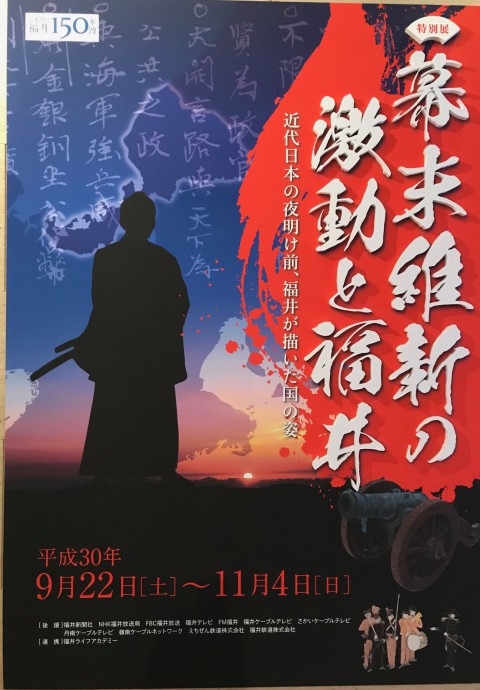Wine event held in front of Fukui Station
2019.10.19
A season for wine is here in Japan. The other day, the annual wine event was held in a roofed space "Happy Terrace", right in front of Fukui Station.
At the event, they offered the 150 kinds wine selected from around the world from 200 yen for a glass. Food booths were set up by several popular restaurants and various shops in Fukui, so the visitors could enjoy good foods, breads and desserts as well. And, staff sold wine in a wagon from table to table, which was good service for visitors who don't want to stand up often to get wine at the booth. (H.S)
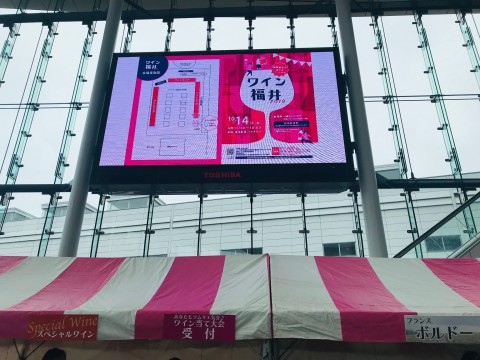
The "Happy Terrace" is an all-weather space, which is a good place for such an event.

There also was a champagne corner.
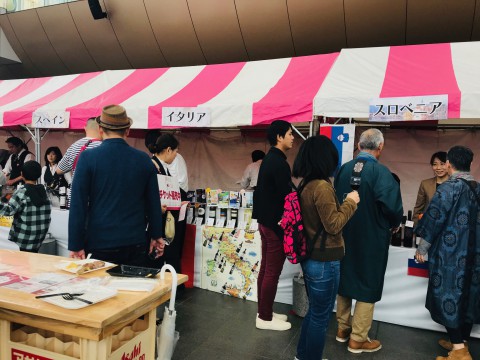
I saw the Slovenian wine for the first time.
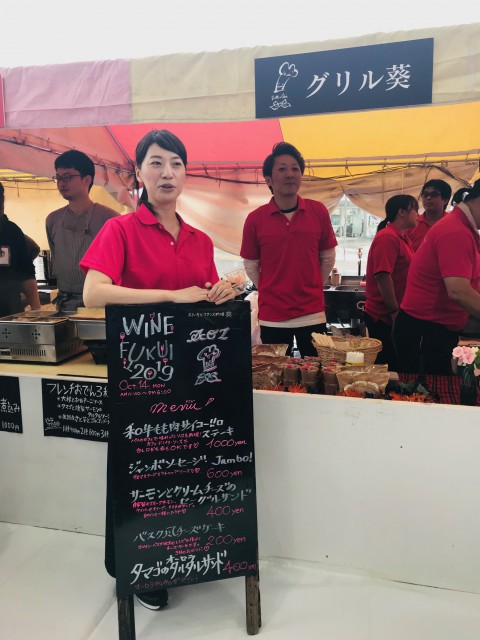
The food booth of an old restaurant "Grill Fukui"

There were a lot of foods that go well with wine and I couldn't easily choose what to eat.

Assorted hors d'oeuvre

Special advance tickets were sold at Liqueur World Hana and Yasubun.



